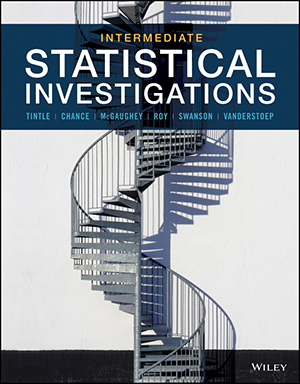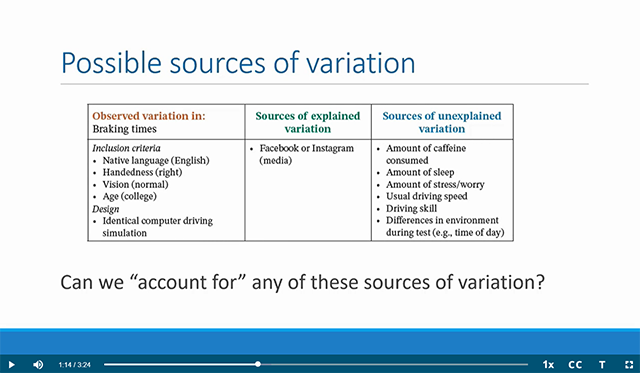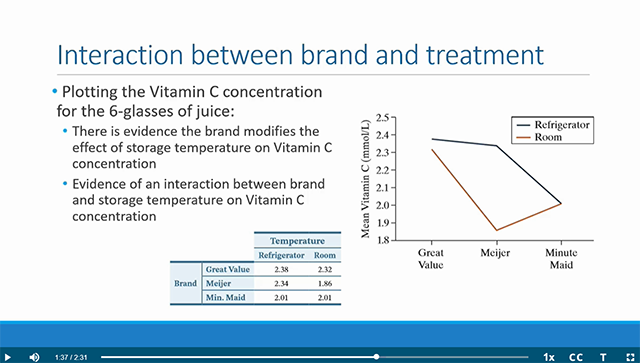
Intermediate Statistical Investigations
Nathan Tintle, Beth L. Chance, Karen McGaughey, Soma Roy, Todd Swanson, and Jill VanderStoep
Intermediate Statistical Investigations provides a unified framework for explaining variation across study designs and variable types, helping students increase their statistical literacy and appreciate the indispensable role of statistics in scientific research. Requiring only a single introductory statistics course as a prerequisite, the program uses the immersive, simulation-based inference approach for which the author team is known. Students engage with various aspects of data collection and analysis using real examples and clear explanations designed to strengthen multivariable understanding and reinforce first-course concepts.
Each chapter contains in-depth exercises which follow a consistent six-step statistical exploration and investigation method (ask a research question, design a study, explore the data, draw inferences, formulate conclusions, and look back and ahead) enabling students to assess a variety of concepts in a single assignment . Challenging questions based on research articles strengthen critical reading skills, fully worked examples demonstrate essential concepts and methods, and engaging visualizations illustrate key themes of explained variation. End-of-chapter investigations use real data from popular culture and published research studies in a variety of disciplines, exposing students to various applications of statistics in the real world. Throughout the text, user-friendly web applets allow students to conduct the simulations and analyses covered in the book.
Schedule a Demo Request Instructor AccountWant to learn more about WileyPLUS? Click Here

Explorations and Investigations Workbook
To facilitate active learning, each chapter contains many Explorations for the students to complete. These materials enable a variety of instructor-determined approaches to content delivery including those where examples or concepts are presented first by the instructor, then explored by the student or vice versa. This workbook is available in a PDF format that can be filled out and submitted electronically by students.

Author-Created Chapter Videos
Created for each learning objective, these videos explain and reinforce key concepts for students.

Author-Created Example Walkthrough Videos
Created for examples throughout the text, these videos explain and reinforce key concepts for students by walking them through each example in detail.
Additional Features Include
- ISI Applets Rather than asking students to learn to use a statistical software package, the author team has designed easy-to-use web applets that enable students to conduct simulations and perform the analyses presented in the book. Instructors may also ask students to use a commercial software package, but this is not required. A guide to using these applets is available for instructor reference.

Nathan L. Tintle is associate professor of statistics at Dordt College. He has led efforts to develop and institutionalize randomization-based curricula at two institutions (Hope College, 2005–2011 and Dordt, 2011–present), and currently leads the curriculum development project. He has been an invited panelist for several statistics education sessions at national meetings, was recently a member of the executive committee of the Section of Statistical Education of the ASA, received the 2013 Waller Education Award for teaching and innovation in introductory statistics, and was a member of a national advisory committee to the ASA President on training the next generation of statisticians. He has co-authored several articles on student learning using the randomization curriculum, one of which recently won an award for best paper of the year from the Journal of Statistics Education.
Beth L. Chance is Professor of Statistics at California Polytechnic State University. She is also co-author with Allan Rossman of the Workshop Statistics series. She has published articles on statistics education in The American Statistician, Journal of Statistics Education, and the Statistics Education Research Journal. She has also collaborated on several chapters and books aimed at enhancing teacher preparation to teach statistics and has been involved for many years with the Advanced Placement Statistics program. She is a Fellow of the American Statistical Association and received the 2002 Waller Education Award for Excellence and Innovation in Teaching Undergraduate Statistics. The Rossman/Chance collection of online applets for exploring statistical concepts was awarded the 2009 CAUSEweb Resource of the Year Award and a 2011 MERLOT Award for Exemplary Learning Materials.
Karen Mcgaughey is Professor of Statistics at California Polytechnic State University. She has participated in efforts to develop and implement simulation-based curricula at Cal Poly since 2011. She has presented on the use of simulation-based curriculum and multivariable thinking at national and international conferences and has co-led workshops on the use of simulation-based instruction and multivariable thinking. She has been involved with the Advanced Placement Statistics program for many years and is currently serving on the Test Development Committee. She has an active research program, consulting and co-authoring papers from a wide variety of disciplines including Communications, Biology, Mechanical Engineering, and Kinesiology.
Soma Roy is associate professor of statistics at California Polytechnic State University. She is editor of the Journal of Statistics Education and has presented talks related to the randomization-based curriculum and student learning at national meetings. She writes and reviews assessment tasks for the Illustrative Mathematics Project, an initiative to support adoption of the K-12 core standards for statistics. She co-leads, with her colleagues at Cal Poly, a teacher-preparation workshop for AP Statistics teachers. She also has an active research program in health statistics involving undergraduates.
Todd M. Swanson is associate professor of mathematics at Hope College. He is a co-author of Precalculus: A Study of Functions and their Applications, Understanding Our Quantitative World and Projects for Precalculus, which was an INPUT Award winner. He has published articles in the Journal of Statistics Education, Statistics Education Research Journal, and Stats: The Magazine for Students of Statistics. He has presented at numerous national meetings, workshops, and mini-courses about innovative ways to teach mathematics and statistics that focus on guided-discovery methods and projects.
Jill L. Vanderstoep is Adjunct Assistant Professor of Mathematics at Hope College. She has participated in efforts to develop and implement randomization-based curricula at Hope College since 2005. She has presented on the curriculum and assessment results at national conferences and has co-led workshops on introducing and implementing the randomization-based curriculum. She has co-authored two articles looking at student learning differences between randomization-based curriculum and traditional curriculum. She has extensive experience in the evaluation of assessment data to drive curricular reform.
Chapter 1: Sources of Variation Chapter 2: Controlling Additional Sources of Variation Chapter 3: Multi-factor Studies and Interactions Chapter 4: Including a Quantitative Explanatory Variable Chapter 5: Multiple Quantitative Explanatory Variables Chapter 6: Categorical Response Variable Chapter 7: Practical Issues

